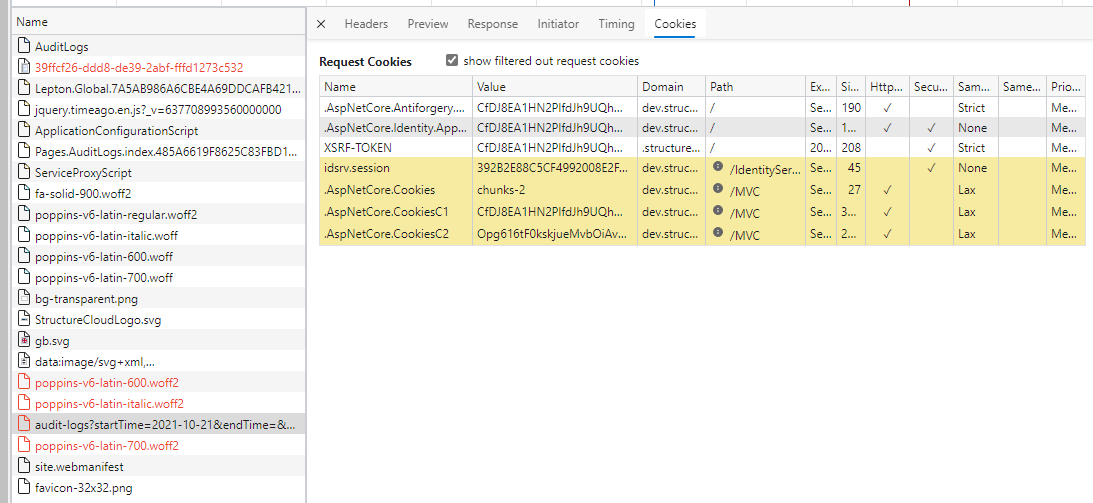Activities of "cfd000"
- ABP Framework version: v6.0.0
- UI type: MVC / Blazor
- DB provider: EF Core
- Tiered (MVC) or Identity Server Separated (Angular): yes
According to Microsoft documentation, System.Net.Mail.SmtpClient is obsolete and should not be used.
- https://github.com/dotnet/platform-compat/blob/master/docs/DE0005.md
- https://github.com/dotnet/dotnet-api-docs/issues/2986
- https://learn.microsoft.com/en-us/dotnet/api/system.net.mail.smtpclient?view=net-6.0
Additionally, Office 365 is going to disable basic authentication for SMTP as of December 31, 2022. https://learn.microsoft.com/en-us/exchange/clients-and-mobile-in-exchange-online/deprecation-of-basic-authentication-exchange-online
All of the documentation indicates that MailKit https://github.com/jstedfast/MailKit is now the recommended solution.
I did not see a way to use OAuth2 with MailKit using the ABP module. Is there any sample code that demonstrates how to do this?
You keep avoiding answering my direct question.
We cannot implement any .NET classes because the legacy application is not written by us, it is a 3rd party C++ application which is writing directly to the database.
We have no problems using Auditing within ABP. We are looking to populate the audit log tables for changes made OUTSIDE of ABP in our legacy application (which does direct SQL queries, and cannot be modified to use the ABP APIs). Is there a documented approach? If not, is there a specific class we can look at to determine how best to emulate the logic? We have a subscription that includes full source code.
- ABP Framework version: v6.0.0
- UI type: MVC / Blazor
- DB provider: EF Core
- Tiered (MVC) or Identity Server Separated (Angular): yes
We are slowly replacing the UI for a very large existing application with ABP, and are happy to have the Auditing capabilities. Some entities may be completely controlled (created, updated, and deleted) by the legacy application for quite a while as we work on building out different areas using ABP. We would like to enable Audit Logging for changes to certain tables that are NOT being modified through ABP (although they will be in the same database as the ABP tables). Do you have any suggestions on how to write the appropriate audit log entries for changes made outside of ABP? The legacy application will be doing direct SQL edits, so we are thinking of tracking those changes using triggers.
As an example: When publishing our solution in Docker containers we had to establish routable URLs for the reverse proxy. This meant that https://www.somedomain.com/swagger and https://www.somedomain.com/api were routed to the Http-API container, https://www.somedomain.com/MVC was routed to the Web container, https://www.somedomain.com/Account , https://www.somedomain.com/connect , and https://www.somedomain.com/.well-known are routed to the Identity container, and everything else goes to Web.Public. The login process was working, but any pages requiring authorization would fail. The "Audit Logs" page, for example, would get an error on the call to https://www.somedomain.com/api/audit-logging/audit-logs?startTime=2021-11-02&endTime=&url=&userName=&applicationName=&correlationId=&httpMethod=&httpStatusCode=&maxExecutionDuration=&minExecutionDuration=&hasException=&sorting=executionTime%20desc&skipCount=0&maxResultCount=10 even though we could execute the same URL from the Swagger page without an error. Once I realized that I could not just copy/paste the "Request URL" from the Headers (when viewing the Developer Tools in the browser), I tried adding the additional /MVC/ in the path and it worked. Once I modified the abp.js file to set abp.appPath to include this as part of the base URL everything worked.
It appears that the problem was because the HTTP-API server cannot handle most of the API calls from the MVC client directly - when these calls were routed through the MVC client they all succeeded. It looks like the reason it worked from the Swagger interface is that the Swagger interface passed a JWT token which was not used on the MVC client. Once we determined that the API calls worked properly when the MVC subfolder/virtual directory was inserted, then it became obvious that the problem was due to "abp.appPath" not returning the correct base path.
Is there any documentation you can refer us to?
Containerized deployment is pretty common, and we really don't need the added complexity of going full microservices.
Is there someone who is familiar we can consult?
Is there an alternate way to configure the 4 containers behind a load balancer? The subfolders aren't mandatory if there is a different way to setup the routing rules (we need to know which requests go to Public, Web, API, and Identity).
I am now getting what I THINK are all of the correct cookies, but still no access.
When I go to the /swagger URL I am able to successfully retrieve data, so I know the problem is on the MVC side.
Is there any documentation that details what needs to be configured when deployed behind a load balancer?
